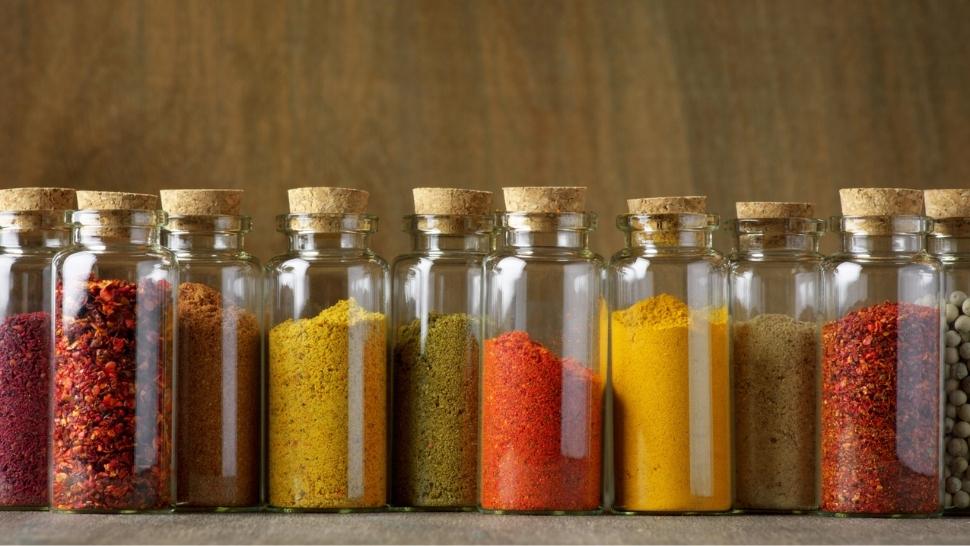
Are you in a flavor rut? Making home cooked meals can be an excellent way to introduce a variety of tastes and flavors into your life, but we often get into a routine of using the same ingredients week in and week out. If you’re finding yourself using the same few spices in your meal rotation, know that there are many more flavors to be explored.
That’s why we’re sharing seven lesser-known spices that will enhance the flavor of any dish and give you a taste of something new. Try adding one or two new flavors to your spice cabinet to punch up the savor factor of your next meal!
Cardamom
Cardamom is a spice made from the dried seeds of the Elettaria cardamomum, an herbaceous plant in the ginger family. The seeds have a warm and aromatic flavor, and are commonly used in South Asian curries and in Scandinavian baked goods. Studies show that cardamom seeds are high in antioxidants and may help reduce inflammation because of their cell-protecting properties.
Try it in: Eggplant with Coconut, Mint, and Pistachio
Cumin
Cumin is a spice made from the whole or ground seeds of Cuminum cyminum plant, a member of the parsley family that is native to the Mediterranean. It has a deep warm and nutty flavor, and is most often used in Indian, North African, and Mexican cuisines. Research has shown cumin to be effective for indigestion, as it may help to activate enzymes that aid in breaking down food.
Try it in: Baked Falafel with Cucumber Yogurt Tzatziki Dip, Cumin-Scented Wheat Berry and Lentil Soup
Fenugreek
Fenugreek is a spice made from the seeds of the fragrant Trigonella foenum-graecum plant, a Mediterranean herb that is part of the pea family. It has a pungent and somewhat bitter flavor like burnt sugar, and is commonly used in Greek, Northern African, and Indian cuisines. Studies suggest fenugreek may help to stabilize blood sugar levels and it is a common supplement suggested to lactating women to increase breast milk production.
Try it in: Traditional Butter Chicken
Sumac
Sumac is a spice made from the red berries of the Rhus coriaria flowering shrub plant and is a cousin of cashews and mangos. The tangy and slightly citrus-tasting spice is made from the ground sumac berries and is used in Middle Eastern cuisines in meats, and rice dishes – it is an important ingredient in the famous za’atar spice blend. Sumac is also high in antioxidants and research suggests it may help to balance blood sugar levels.
Try it in: Edamame Burgers with Sumac-Spiced Carrot Peels
Turmeric
Turmeric is a brightly colored orange spice made from the tuberous rhizomes of the Curcuma longa plant, a cousin of ginger. It has a pepperlike and somewhat bitter warming flavor and is commonly used in Indian and other South Asian cuisines and gives many curries their bright yellow color. Turmeric is also often used in alternative medicine and research has shown it to have anti-inflammatory properties due to its high amount of antioxidants.
Try it in: Turmeric, Potato, and Cauliflower Coconut Curry Soup, Golden Milk Latte
Saffron
Saffron is a spice made from the pollen-bearing stigmas of the crocus flower (Crocus sativus), which are hand-picked and dried and ground for culinary use. Because of the labor needed to cultivate, it is the most expensive spice in the world and weighs more by weight than even gold. Saffron has a pungent floral flavor and a bright red color, and is used in Middle Eastern, Asian, and Mediterranean cuisines. Saffron is also high in carotenoids, a family of antioxidants, and studies have shown the spice to have mood-elevating benefits in people with symptoms of depression.
Try it in: Monkfish Stew with Saffron Broth
Za’atar
Za’atar is a mixture of spices that has been used in the Middle East and Mediterranean for centuries. It was originally made with wild thyme, oregano and other herbs that were harvested by hand but today it can be purchased as a dry herb blend of thyme, oregano, marjoram, and sumac. It is great on meats, flatbreads, and sprinkled on top of roasted vegetables.